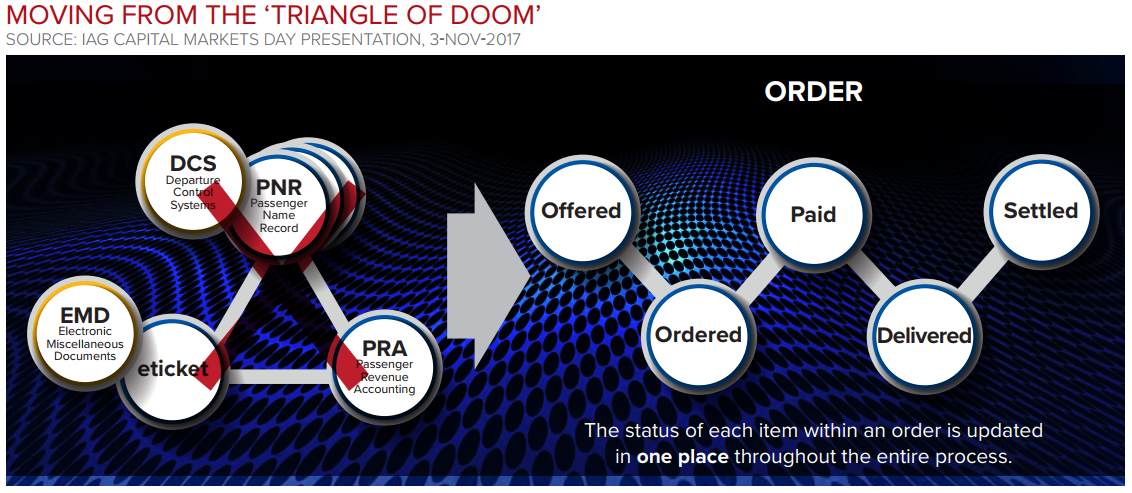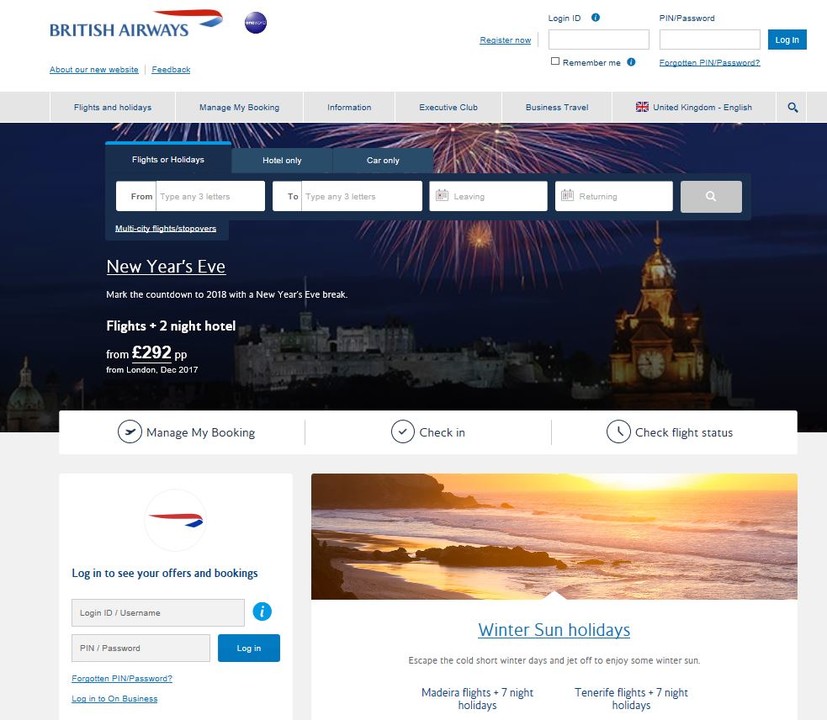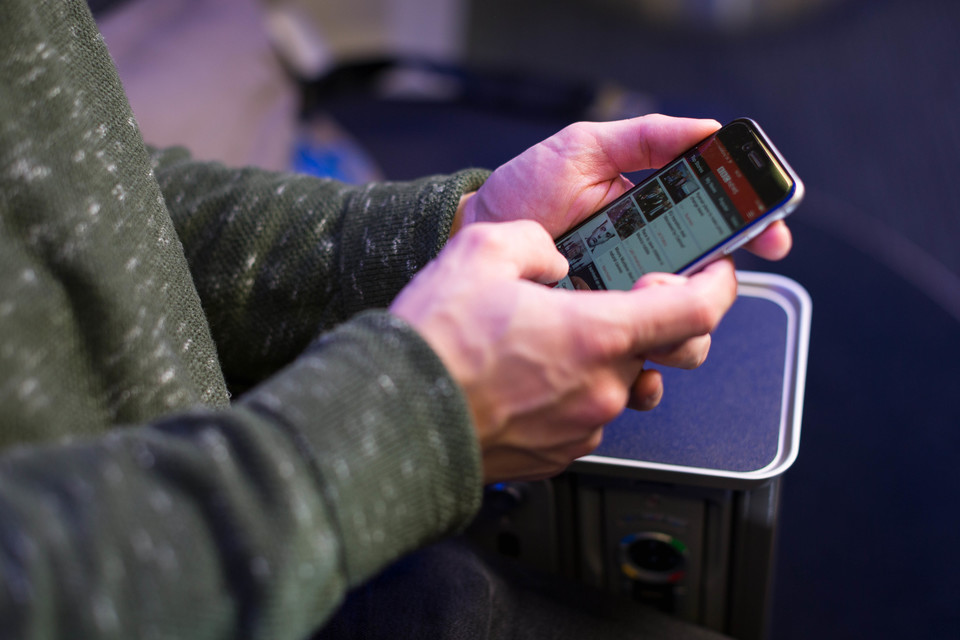The IT infrastructure and systems in the airline industry were designed around batch processing and physical paper documents. Although much of the documentation has been transformed into electronic formats, legacy processing is still present in the system. Customer records are not all in one place, there is complexity and unnecessary cost, and the airlines' ability to personalise the offer is limited by systems that are order-centric rather than customer centric.
The first problem with current airline systems is the disparate nature of customer records. The Passenger Name Record (PNR), is the record that is created when a booking is made and contains all the data vital to the booking. Each PNR is identified by a (five or) six digit alphanumeric reference (this, together with the passenger name, is all you need to get into a customer record: Share a photo of your boarding pass on Instagram and your customer account will be hacked, Mr Boyle warned).
In addition to the PNR, there are also electronic tickets (e tickets), Electronic Miscellaneous Documents (EMD) and Departure Control Systems (DCS). Data is duplicated and cumbersome to reconcile between these different items.
E tickets essentially only record the point of departure and arrival, the fare and taxes. Although this was not a problem when the e ticket was first introduced, unbundling of product features and services that used to be included in the fare has exposed its limitations.
To address this, the EMD is an IATA standard for the electronic documentation of ancillary revenue, in other words all transactions other than electronic tickets. A DCS handles the processing of airlines' airport management activities, including information for check in, boarding cards, baggage acceptance, boarding, load control and aircraft checks. They take information from e tickets and need to interface with airline reservation systems and PNRs.
This legacy approach results in complexity and unnecessary costs due to what Mr Boyle calls "duplicated, monolithic systems", leading to longer and more expensive changes. Another consequence is that staff training is very expensive. According to Mr Boyle, it takes three weeks to train new staff on a DCS, compared to training a point of sale retail assistant in one day.
The legacy approach also results in an antiquated offer management process. Airlines' ability to control and to personalise the offer to the customer is limited. In an age of unbundling, differentiated fare categories and ancillaries, this means lost revenue opportunities.
In addition to these problems, Mr Boyle identified two further fundamental issues. The first is that IAG is not able to create and test new products as fast as it would like. Complexity and cost issues limit the number of revenue-generating and innovative products IAG can undertake. The second is that "the focus of the system tends to drag you back to focusing on the order rather than on the customer and we need to fix that". The process revolves around a PNR, which is specific to the booking, and not around a customer record. There is no single place to hold all orders, preferences and information about the customer.
"We need to get rid of this 'triangle of doom'", said Mr Boyle, referring to the need to reconcile the different data held in the PNR (which also feeds into the DCS) and the e-ticket (which may be supplemented by the EMD) with the airline's passenger revenue accounting (PRA). Mr Boyle described PRA as "the people that spend a lot of effort and time trying to reconcile, after the event, all of these pieces of information, trying to work out what actually was the price at which this ticket was sold".
CHART - IAG describes the need to reconcile different data held in the PNR and the e-ticket with the airline's passenger revenue accounting as the "triangle of doom" Source: Airline Leader
Source: Airline Leader
The contrast with other consumer-facing industries is stark. "If you are working for a modern retail, Amazon or something, you would sit there looking very confused, saying 'how the hell do you even survive with a system like that?'", said Mr Boyle. The solution is to have an order which moves through the process, with each item within an order updated in one place throughout until the order is delivered and settled. "So in a way it's a simple idea", he said.
Mr Boyle pointed to online retail as a source of best practice that airlines need to implement, but conceded that this was a big change for the airline industry. "NDC is an important first part of that, but there's a lot of other pieces of this which need to be unravelled, and that's what this whole shop order pay process is about."
NDC, or New Distribution Capability, is a set of technology standards produced by IATA to allow airlines to distribute all of their content through third parties. Under the legacy approach, the visibility of ancillaries through the Global Distribution Systems (GDS) is limited. This limits airlines' ability to customise their offer through these indirect channels. 'Shop-order-pay' aims to take the process from one that is ordercentric to one that is customer-centric.
When interacting with an airline about a trip, even via an app, it is generally necessary to enter a booking reference in order to retrieve all the data. However, said Mr Boyle, "that really shouldn't be something that we need to do" since all that data should be available in the system. "You can then drill down into the order, rather than the other way around", he said.
Shop-order-pay is part of IATA's Simplifying the Business change programme and is aimed at making airline retailing and merchandising processes to be like other retail sectors. In addition to NDC, it includes initiatives on passenger payments, open API (to facilitate better data sharing across the supply chain), and the one order concept (ie having a single customer order record).
The benefits to IAG from a shop-order-pay approach could be considerable. IAG has applied metrics from an IATA study to estimate that the group could derive around EUR100 million p/a in cost savings, and EUR400 million p/a in revenue benefits. "It also will deliver that customer centricity and NPS customer satisfaction score uplift", said Mr Boyle.
IAG thinks that these figures are very conservative, and that the initiative has considerable further potential. Since the benefits will be passed through to the customer over time, IAG believes it is crucial that the group should be one of the leaders in this area and gain a competitive advantage early.
Legacy technology is still engrained in the airline industry, particularly in the processes relating to customer offers and orders, as was highlighted by the summary of the problems with existing airline systems. Much is being done by airlines to change this, particularly with the help of external contractors. However, in order to progress sufficiently to meet the challenges they face, they must also internalise the necessary skills. As Mr Boyle said, "Digital is not just about the technology. It's a lot about the mindset."
** This text was adapted from a story 'Problems with legacy airline information technology systems: disparate, complex, costly, order centric' that first appeared in Airline Leader magazine, the strategy journal of airline CEOs. You can view the full text, download the full magazine and scan over archived issues on CAPA - Centre for Aviation's special Airline Leader landing page. **

